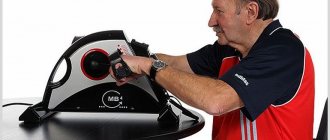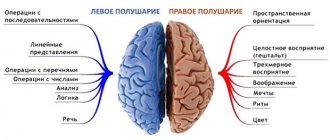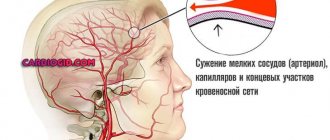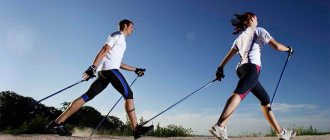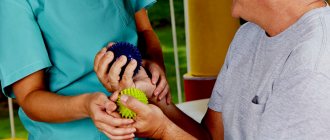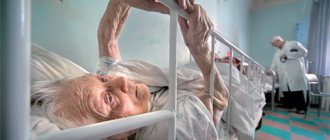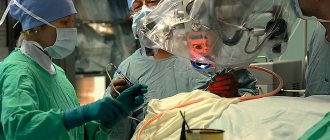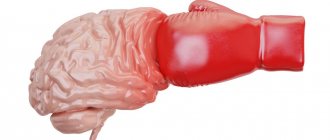Essential tremor
Essential tremor (idiopathic or benign tremors) is the most common brain disease after stroke and epilepsy - 3-4 cases per 1000 people.
In 50% of cases this disease is hereditary. Its incidence increases with age and reaches its highest prevalence in people over 65 years of age. The only manifestation of this disease is trembling. And this is the answer to the question why your hands shake.
Over time, the frequency of tremor decreases, and the amplitude, on the contrary, increases. The patient has difficulty fastening buttons, especially small ones - on the collar of a shirt, on sleeves, when tying shoelaces, while eating liquid food, up to the inability to use a spoon, or, if necessary, eat soup. It becomes difficult to bring a glass of liquid to your mouth without spilling its contents.
If essential tremor begins from the head, then its trembling, as a rule, is first indicated by the people around the patient.
Essential tremor increases even with minor loads, with slight excitement. Therefore, people suffering from this disease try to avoid public communication and withdraw into themselves. The tremor also increases with hypothermia of the head, hands and the whole body. Many patients note severe tremors in the morning, as well as when drinking strong coffee. But alcoholic drinks in small quantities reduce tremors on the day they are taken, but significantly increase them on the next day and on subsequent days.
This disease progresses slowly, but once it begins, it progresses throughout life. For some, it is more pronounced and affects all limbs, the head, a trembling of the voice appears, for others only the head is involved in the tremor, for others - trembling of only the hands.
Research by scientists has shown that essential head tremor is based on disruption of the functioning of certain areas of the brain and changes in the concentration of neurotransmitters - substances that ensure the transmission of excitatory and inhibitory impulses. However, no structural changes in the brain are detected.
In some cases, neurologists, and even more so general practitioners, experience certain difficulties when diagnosing essential hand tremor, since a number of diseases, and primarily Parkinson's disease, can manifest themselves as trembling of the hands and head. Therefore, only neurologists who specialize in this particular disease can make an accurate and correct diagnosis and prescribe appropriate treatment, since, for example, medications that can help with Parkinson’s disease do not help with essential tremor.
There is a special test that is used to identify essential tremor and make a diagnosis. If a patient slowly draws a spiral on a sheet of blank paper, the line of this spiral will be uneven and jagged.
First aid for seizures after a stroke
In case of a convulsive state in a patient who has suffered a stroke, it is necessary:
- call an emergency medical team;
- if a person experiences fainting with convulsions, it is necessary to ensure that he is in a supine position;
- provide fresh air access to the room, if possible, free the patient from tight clothing;
- the head should be in an elevated position, and it must be ensured that there are no sharp or heavy objects that could injure the patient during loss of consciousness with convulsions;
- check for the presence of food debris, saliva or vomit in the oral cavity, and then remove them; if there are removable dentures, they are removed;
- if the attack is accompanied by wheezing, the patient must be turned on his side and the respiratory function must be monitored;
- in case of convulsions with prolonged seizures, it is necessary to restrain the person at all times to prevent injury;
- if the condition is accompanied by severe muscle spasms, while consciousness is preserved, you can rub the muscles or apply a compress of mustard and olive oil.
https://www.youtube.com/watch?v=OlZavtf8ggI
Treatment of seizures after a stroke is necessary in 8% of cases of the total number of victims of cerebral hemorrhage. The development of complications is facilitated by the occurrence of hemorrhagic or ischemic lesions in an acute form, complicating an already severe form of the disease.
The consequences of brain disorders are:
- Recurrent stroke - repeated convulsive seizures during the recovery period of a stroke indicate the ineffectiveness of the prescribed therapy. If treatment adjustments are not made in a timely manner, recurrent brain damage can be expected to develop. Particularly dangerous is a generalized seizure after a stroke, indicating that internal bleeding has already begun.
- Fatal outcome - the frequency of seizures after a stroke may be a clear indication that drug therapy has failed to stop internal bleeding or ischemic damage to brain tissue. Constantly increasing intracranial pressure leads to a deterioration in the patient’s well-being, the development of coma, as well as neurotic manifestations. Repeated convulsions with ever-increasing intensity indicate extensive damage to brain tissue, often incompatible with life.
- Coma - post-stroke convulsions lead to short-term and long-term loss of consciousness. Intense convulsive phenomena cause the development of coma.
- Disability – involuntary spasms in the arms and other limbs, accompanied by chaotic movements. The patient is unable to control his actions and often causes harm to his body: he may get hurt, bite off the tip of his tongue, etc.
It is necessary to combat limb cramps. A gradual decrease in the intensity of manifestations indicates that drug therapy was chosen correctly, and restoration of lost brain functions is observed.
The goal of therapy is not only the need to relieve seizures or reduce their intensity, but also to eliminate the causes that influence the development of pathological changes. The patient must undergo a general examination of the body: MRI or CT, angiography, clinical blood and urine tests.
Only after receiving the results of diagnostic procedures, a neurologist will be able to draw a conclusion about what led to increased muscle tone and prescribe effective drug treatment.
The most common symptom experienced by stroke patients is leg cramps. This is due to the localization of hemorrhage in the frontal lobes of the brain.
To get rid of cramps of the lower extremities, restorative therapy is prescribed, which is almost identical to treatment aimed at recovery from hemorrhagic or ischemic damage.
- Antithrombosis therapy - for atherosclerosis, treatment of leg muscle cramps begins with taking medications that reduce blood clotting and are aimed at reducing the amount of bad cholesterol. After discharge, the patient is often recommended to take lifelong tablets, acetylsalicylic acid, the lightest anticoagulant that thins the blood.
- Restoring blood supply - to stop the development of necrotic phenomena, it is recommended to regularly take drugs that improve brain activity and help enrich the affected area of the brain with oxygen.
- Nootropic drugs - convulsions of half the body or individual limbs are just a symptom indicating serious damage to brain tissue. Therapy prescribes medications that improve brain activity.
- Anticonvulsants - it is necessary to cope with seizures with the help of special medications (carbamazepine and the like) aimed at reducing the excitability of the brain due to irritation of healthy tissues located near the affected area. The likelihood of developing convulsive phenomena can be determined using Dopplerography, encephalogram and ultrasound. After just a few doses of the drug, the intensity of cramps in the calves decreases and lost sensitivity is restored.
The appearance of seizures indicates serious disturbances in the structure and function of the brain. Effective treatment will require complex therapy.
Early recognition of stroke determines the outcome of the disease. Admission of the patient to the hospital no later than 1.5 hours after the stroke will relieve numbness of the limbs and other severe symptoms. Therefore, everyone should know how to recognize the symptoms of a stroke. If a person suddenly becomes ill, do 3 tests:
- Ask the person to smile. If one half of the face is motionless and the corner of the mouth is drooping, a stroke is suspected.
- Ask them to raise both hands. If at the same time one arm drops, this is a sign of a stroke.
- Ask the person what his name is. If the patient slurs his words or does not understand the question, cerebral apoplexy is highly likely.
If at least one of the signs is detected, call an ambulance or take the victim to the hospital.
Essential tremor treatment
Today, there are medications that can help treat hand tremors. These include: sedatives and anticonvulsants, antispasmodics and antidepressants, vasodilators and antisclerotics and others. It is clear that medications must be prescribed by the attending physician who is observing this particular patient.
There are also medicinal plants that are successfully used for the complex treatment of essential tremor. First of all, these are soothing and anticonvulsant medicinal plants: valerian root, peony root, cyanosis root, Baikal skullcap root, motherwort herb, soothing herbal teas and collections of soothing medicinal plants.
Drops in alcohol are prepared from valerian, peony and motherwort: pour 100 g of raw material into 1 liter of 45% alcohol, leave for 20 days in a dark place at room temperature. Drink 10-20 drops 3 times a day with 1/3 glass of water, regardless of meals.
An infusion is also prepared from soothing medicinal plants: pour a tablespoon of crushed raw material into 0.5 liters of water, boil over low heat with the lid closed for 20 minutes, leave for 40 minutes. Drink half a glass 3-4 times a day, regardless of meals.
Vasodilating medicinal plants and antispasmodics are recommended: lemon balm herb, mint herb, astragalus herb, hawthorn flowers, vasodilating herbal teas. An infusion is prepared from these medicinal plants: pour a tablespoon of crushed raw material into 0.5 liters of water, boil over low heat with the lid closed for 15 minutes, leave for 30 minutes. Drink half a glass 3 times a day, regardless of meals.
Medicinal plants are prescribed that improve blood flow - both arterial and venous, have an anti-sclerotic effect, thin the blood: periwinkle herb, tribulus herb, dioscorea root, leaves and fruits of gingko biloba, young shoots of horse chestnut.
The course of taking medications from medicinal plants is usually 3-4 months or more.
It is very important that a patient suffering from essential tremor actively cooperates with the attending neurologist, informs him about changes in his condition and clearly follows those prescriptions that are recommended and objectively help him. As clinical practice shows, if the treatment of essential tremor is correctly selected and it is comprehensive, including both medications and herbal medicine and homeopathy, then significant improvements are noted. Trembling decreases, patients feel more confident, they can care for themselves and perform various simple tasks.
Gymnastics that restores sensitivity in the fingers
In order to neutralize numbness, it is necessary to perform the following exercises for the fingers, which can give good results:
In a lying position, you need to raise your hands up and clench and unclench your fingers 80 times.
For the next exercise, you need to stand facing the wall with your arms raised up, while leaning on your toes. You need to stand like this for about a minute, after which you should repeat the exercise several times.
The final element of the gymnastics looks like this: in a standing position (on a full foot), you need to clasp your hands behind your back and hold them like that for 1 minute. This exercise is repeated 3 times.
Recovery periods
Rehabilitation for stroke patients necessarily takes place in several stages. This is the use of various drugs that help break down growths on the walls of blood vessels and improve blood circulation in the cerebral hemispheres. Also included are various types of exercises used to restore movement and increase sensitivity in the right or left hand.
Physical rehabilitation after a stroke includes the following stages:
- Ask the patient to mentally, with his eyes closed, imagine the state before the illness, try to think about those movements that were previously performed with his hands without problems. The patient will try to move his fingers, then his hand, and learn to bend, straighten and raise his arms.
- Make sure that the victim performs the exercises as accurately as possible.
- The course of exercises can be periodically replaced with more complex ones, depending on the dynamics of improvement in joint mobility. Classes should be designed not only to develop the elbow joint, but also the wrist of the paralyzed hand.
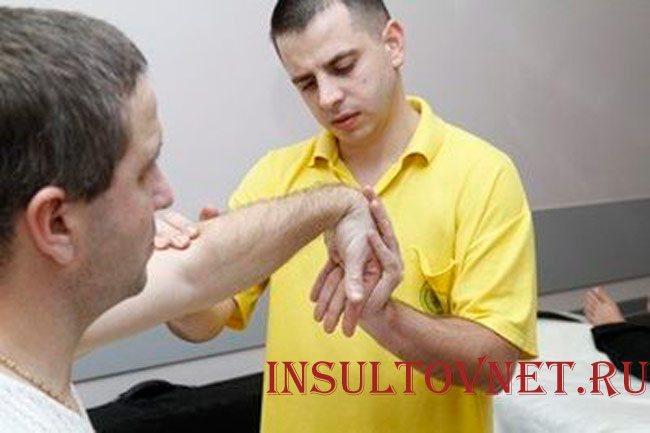
- Exercises during the day should be regular, especially on the paresis side.
- Make sure that the patient tries to work mainly with the hand that does not work well after a stroke. By shifting everything to the healthy hand, he will not learn to move both hands.
Useful exercises for a person who has suffered a stroke include the use of homemade exercise equipment. A hand exercise bike, elastic belts with handrails, and exercises with rubber balls can help get rid of numbness in your arms and legs.
To enhance the effect, together with all physical warm-ups, doctors recommend performing a rubbing massage of the limbs for several minutes every day. Additionally, electrical stimulation, as well as physiotherapeutic procedures, depending on the type of developing consequences.
Dangerous complications
Lack of adequate treatment for seizures after stroke can cause complications. Such patients are at risk:
- Repeated stroke, which not everyone manages to survive;
- Comatose state - attacks of muscle spasms lead first to a short-term and then to a longer loss of consciousness. With frequently recurring seizures, the patient falls into a coma;
- Loss of ability to work - the regular occurrence of seizures that do not disappear when taking standard medications indicates necrotization of large areas of the brain. Rehabilitation of such a patient is not effective, the person becomes disabled;
- Fatal outcome - constant relapses of convulsive attacks, the lack of positive dynamics during treatment indicates the likelihood of internal bleeding. It is practically impossible to eliminate this condition. Therefore the patient dies.
To prevent the development of dangerous consequences of seizures during a stroke, you should immediately seek medical help, undergo a comprehensive examination and begin treatment.
Reasons for decreased mobility
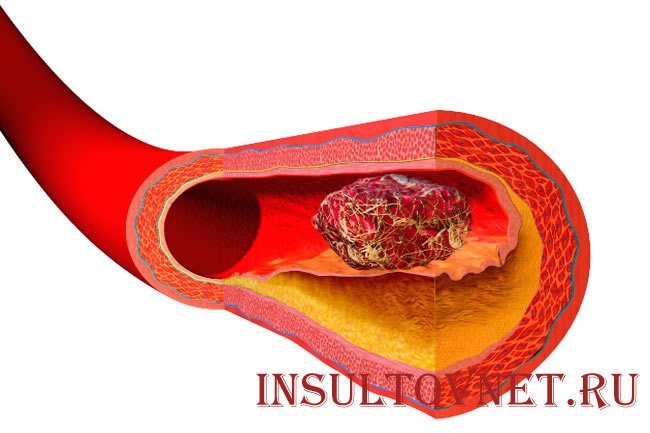
Sharp tremor and numbness in the body alarm everyone, especially if it concerns loved ones. Such reasons may be associated with the occurrence of a transient ischemic attack or the onset of an ischemic stroke, which the doctor determines by the following signs:
- Atherosclerosis of the cerebral arteries.
- Formation of blood clots in the bloodstream of the heart.
- Dilatation of the veins of the lower extremities, there is a possibility of fragmentation; separated growths on the blood vessels can enter the general bloodstream, preventing blood from moving normally along the vascular bed.
- Postoperative intervention in the area of the carotid artery or injuries of the cervical spine, as well as due to osteochondrosis.
- Instability in blood pressure readings.
- High thrombus formation.
If your left arm goes numb: signs of a heart attack
Many people are scared that numbness is considered one of the first signs of a stroke.
But in order not to panic in vain, remember: numbness in itself, without other signs, usually does not indicate a serious threat to health and life. With a stroke, numbness occurs in any part of the body, but only on one side, and is certainly accompanied by some of these symptoms:
- weakness, dizziness, headache;
- loss of coordination, balance;
- nausea;
- speech disorder;
- facial distortion;
- blurred vision;
- disturbance of consciousness, orientation.
The role of exercise therapy classes
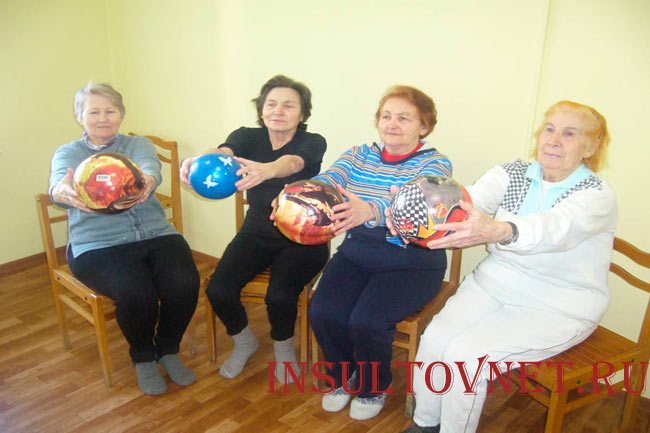
As a result of a stroke, the consequences can be unpredictable. During this very period, not only speech disturbances and decreased mental functions can be observed, but also tremors during movements. There is no likelihood that the patient, without receiving additional help, will be able to independently restore the functions he lost before the illness.
Therefore, during treatment, the use of drugs to reduce coagulation, control blood pressure, including physical exercises that improve the mobility of the joints of the arms and legs, becomes important for many patients. Do not begin exercises without consulting a physical therapist. After all, tremors and numbness in the hands manifest themselves differently in everyone.
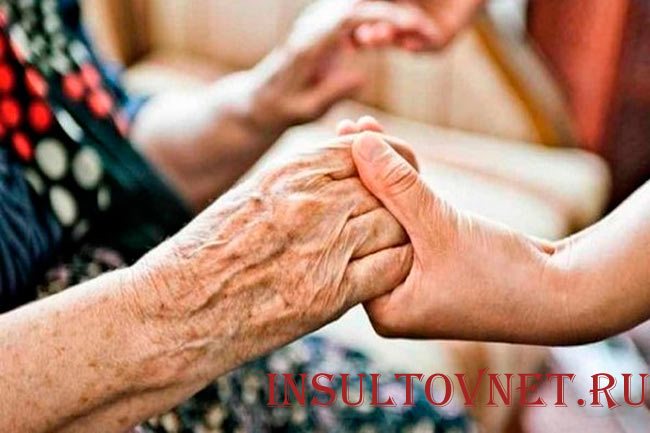
After a stroke, the victim may feel his left or right hand shaking for a long time. Including slight numbness in the hands and tremors in the legs when moving.
To reduce paresis on the paralyzed side of the body, exercises are not contraindicated for patients in a coma. They should not be too intense, but take place in a more passive form. Exercise helps eliminate bedsores and atrophy of the lower extremities.
Paresthesia in hypoparathyroidism
Numbness of the hands (paresthesia) is one of the symptoms of stroke (cerebrovascular accident).
Impaired sensitivity of the limbs on one side of the body is accompanied by other focal, cerebral and autonomic symptoms. The cause of numbness in the hands after a stroke at a young age is inflammation of the vascular wall or blockage by a blood clot. In older age, hand numbness after a stroke is more often associated with atherosclerosis, arterial hypertension, diabetes mellitus, abdominal obesity, and smoking. Risk factors for stroke and hand paresthesia are smoking and alcohol. The genetic background for the development of cerebral ischemia is a predisposition to strokes in relatives.
If a sensation of goosebumps appears on the scalp, it does not go away for a long time, symptoms such as pain in the skin, headache, dizziness, redness of the skin are added, it makes sense to talk about malignant paresthesia.
There are many reasons for its development, so to establish the factors that provoke the occurrence of the pathological process, a comprehensive examination and consultation with specialists from various branches of medicine will be required.
- Hypovitaminosis. Vitamin B1 is necessary for the normal functioning of the nervous system. If it does not enter the body in sufficient quantities, goosebumps often appear on the skin, which is accompanied by irritability and heart pain.
- Lack of magnesium. With a deficiency of this microelement, a person feels severe weakness and fatigue, he has goosebumps on his head, back, legs, cramps and indigestion may appear.
- Arrhythmia is a disease in which the rhythm of the heart is disrupted. In addition to goosebumps, in this case there is a chill without a change in body temperature.
- Stroke. The primary symptom of this dangerous disease is goosebumps, which signal the death of parts of the brain.
- Guillain-Barre syndrome. The pathological process develops after a viral illness (herpes, influenza). In this case, the goosebumps spread only to the lower limbs, after which the legs go numb and lose mobility.
- Multiple sclerosis is a dangerous pathology in which immune cells attack their own nerve cells. Most often, goosebumps run across the face and aching pain appears.
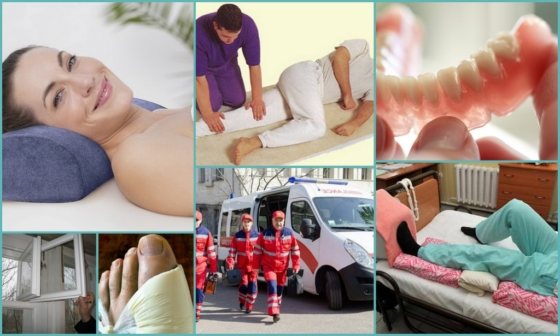
To determine why goosebumps are running on your skin, you should conduct a comprehensive examination. Malignant paresthesia is dangerous for the health and life of the patient, as it can signal the occurrence of complex pathological changes.
Patients diagnosed with hypoparathyroidism almost always experience goosebumps on the scalp, body and face. This is a disease in which the concentration of calcium is greatly reduced due to impaired functioning of the parathyroid glands.
In addition to paresthesia, the following symptoms may also occur:
- severe carious damage to dental tissue;
- nails become dull, peel and grow poorly;
- hair begins to fall out profusely;
- the skin is peeling;
- the muscles of the limbs contract involuntarily;
- abdominal pain appears, digestion is disturbed;
- hearing and vision deteriorate.
Hypocalcemia, and even with hypoparathyroidism, is a very dangerous condition that requires immediate medical intervention. In the absence of an adequate response, the consequences can be the most unpredictable, including disruption of the muscles of the respiratory system and respiratory arrest. That's why you can't ignore goosebumps.
Pain in the arms and legs can occur either immediately after a stroke or after several weeks. In some cases, it begins to appear even after several months of the rehabilitation period. Pain in the arms and legs after a stroke is divided into two types: local and central.
The cause of local pain syndrome is problems with joints and muscles. It is caused by damage to the peripheral nervous system, has a relatively low intensity, and does not have a significant effect on the patient’s lifestyle.
Central pain occurs due to damage to the brain. He begins to misinterpret the signals coming from the body and mistakes even the lightest touch on the skin for pain impulses. The pain may:
- be of a paroxysmal or continuous nature,
- manifest as tingling or burning sensation,
- change intensity due to temperature changes, etc.
Intense pain prevents the patient from performing even basic self-care tasks.
Often the cause of pain in an arm or leg paralyzed after a stroke is contracture. It occurs when, as a result of an attack, the muscles of the limbs responsible for their flexion begin to dominate over those that control extension.
When you try to bend or straighten an arm or leg, a muscle spasm occurs, which manifests itself in the form of severe pain. If muscle spasms are not treated immediately after a stroke, the paralyzed limb may become rigid in a bent position and cannot be straightened.
Rehabilitation
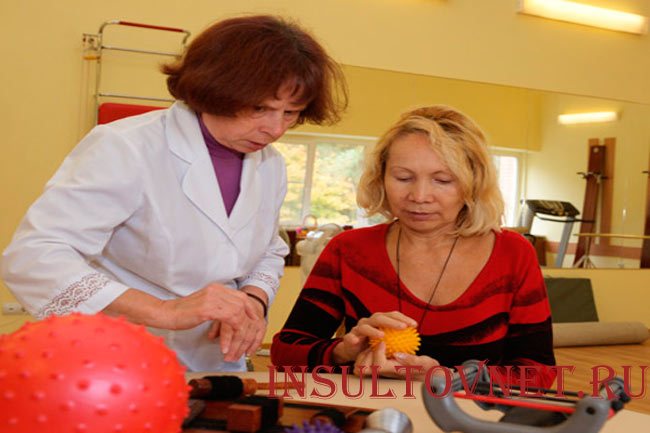
A person after a stroke needs constant help from the medical team and loved ones.
Knowing the characteristics of the course of a stroke, start with the simplest and most uncomplicated activities. For example, flexion and extension of the arms and legs at the joints up, down, counterclockwise, and in the opposite direction.
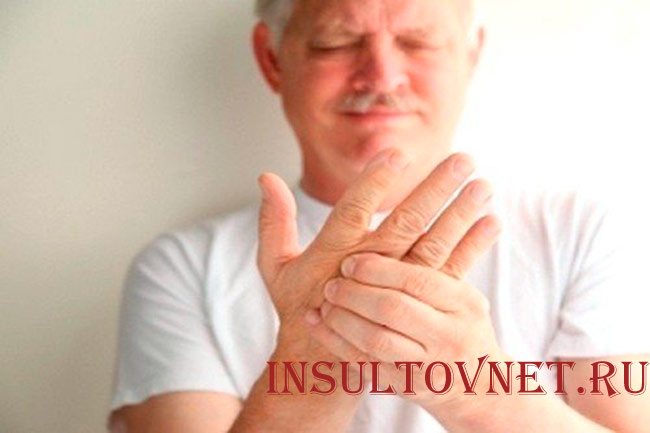
It is worth considering that if there is excessive numbness of the hands, accompanied by pain when moving, then physical exercise should be reduced or changed to less active ones.
It is necessary to constantly praise the victim for the task he performed, even minor movements of the fingers. After restoring some movements, one should not assume that the patient will independently perform the exercises indicated to him. Therefore, in order for the numbness of the hands to begin to be felt in a less pronounced form, the patient must perform any exercises within his power every day during the subsequent years of rehabilitation.
Your IP address is blocked.
Tremor is an involuntary rhythmic oscillatory movement of complementary antagonistic muscle groups, usually involving the hands, head, face, vocal cords, torso, and legs. The diagnosis is made on the basis of clinical data. Treatment depends on the cause and type of tremor and may include physiological trigger avoidance, propranolol or primidone essential, cerebellar physical therapy, levodopa for parkinsonism, and possibly deep brain stimulation or thalamotomy if disabling and refractory to treatment. Physiological tremor is usually almost invisible, and in many people it becomes noticeable during physical or mental stress. The severity of the tremor may not be related to the severity of the underlying disease.
Traditional methods

No treatment method can lead to a 100% guarantee that paresis will be cured and subsequently recur. Therefore, it is worth remembering that there will always be consequences.
First of all, when prescribing medications, doctors may recommend rubbing an infusion of 2 tbsp to increase sensitivity. l laurel with vegetable oil. Tremor and numbness in the body, arms and legs after such a procedure are expressed to a lesser extent.
If you drink linden tincture before eating, you can prevent paresis and increase the restoration of movements in the arms and legs.

A mixture of medicinal herbs Adonis vernacular, Cinquefoil anserina and common thyme helps reduce paresis and help restore blood flow in the affected limbs.
Unrefined oil and garlic infused with an oil base, when taken three times a day, 10 ml of the drug within 24 hours, helps eliminate many of the consequences of a stroke. It is also useful for restoring movements due to the cleansing properties of garlic cloves.
What types of cerebral ischemia cause loss of sensitivity in the limbs?
The brain regulates processes occurring in the body through neurohumoral pathways. Each part of the brain is responsible for a specific function: motor, sensory, visual and auditory. After blood flow is disrupted in the corresponding part of the brain, neurons die, and as a result, its function is lost. After damage to the center of the brain responsible for the sensory function of the arms and legs, paresthesia of the limbs appears.
Cerebral ischemia occurs for the following reasons:
- prolonged vascular spasm in atherosclerosis;
- blockage of a cerebral vessel by a thrombus;
- blockage of a cerebral vessel by a thrombus brought with blood flow from the cavity of the heart, aorta or large vessels;
- hemorrhage in the brain or subarachnoid space (secondary ischemia).
Atherosclerosis
In some cases, the atherosclerotic plaque itself blocks the lumen of the vessel, resulting in ischemia with the occurrence of paresthesia of the extremities. In some cases, the formation of a blood clot occurs at the site of an atherosclerotic plaque in the cerebral vessels. With arrhythmia, a blood clot forms in the cavity of the heart, and then travels through the bloodstream into the vessels of the brain and causes a blockage.
Numbness of the limbs often occurs during a hypertensive crisis or diabetes mellitus. In this case, transient cerebral ischemia develops. It lasts from 2 minutes to 24 hours. At the onset of a cerebral stroke, it is clinically impossible to determine what kind of ischemia it is. If ischemia progresses after 24 hours, it is diagnosed as a stroke. Ischemia that stopped before 24 hours is regarded as transient (transitory).
Numbness of the upper or lower extremities during a cerebrovascular accident is accompanied by motor, visual, and auditory disturbances. The course of a stroke is unpredictable. Symptoms of apoplexy develop depending on the location and extent of damage to the area of the brain. Let us consider the degree of damage in acute cerebrovascular accident (ACVA).
Symptoms of a transient attack:
- numbness, goosebumps and tingling of the extremities;
- sudden dizziness;
Dizziness with TIA occurs acutely. for no apparent reason
- word pronunciation disorder;
- spots or double vision;
- nausea and vomiting;
- consciousness is preserved, but delirium and loss of orientation are possible.
Transient cerebrovascular accident occurs more often with hypertension, diabetes mellitus and cardiac arrhythmia. After the end of the transient attack, which lasts from 2 minutes to 24 hours, the numbness of the limbs stops.
Stroke
Signs of ischemia:
- numbness of the arms and legs with partial or complete loss of sensation;
- loss or disorder of speech, impaired articulation;
- paresis of an arm or both limbs on one side of the body;
- visual impairment;
- redness and sweating of the face;
- swallowing disorder;
- confused consciousness.
The progression of symptoms after this type of stroke is unpredictable and can persist for up to 21 days. The complex of symptoms depends on the degree and location of the damage. As ischemia progresses, visual and motor disturbances join the symptoms of hand numbness.
Traditional medicine
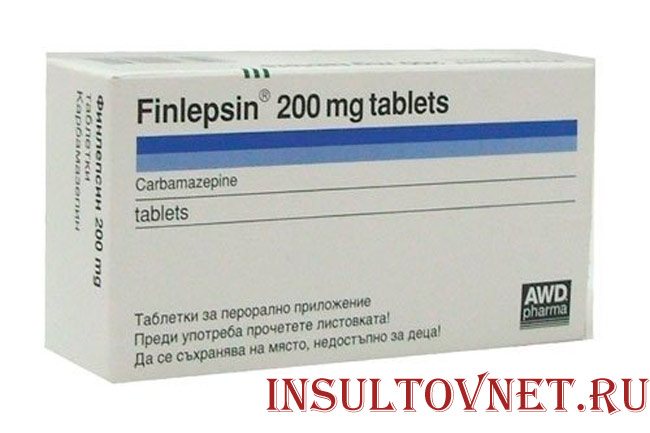
Numbness after a stroke leads to periodic tremors. If pathology is detected on the left side of the head, then the right leg and arm are paralyzed. And vice versa.
To save the patient, the doctor prescribes anticonvulsants, for example, Finlepsin or Carbamazepine 200 mg per day.
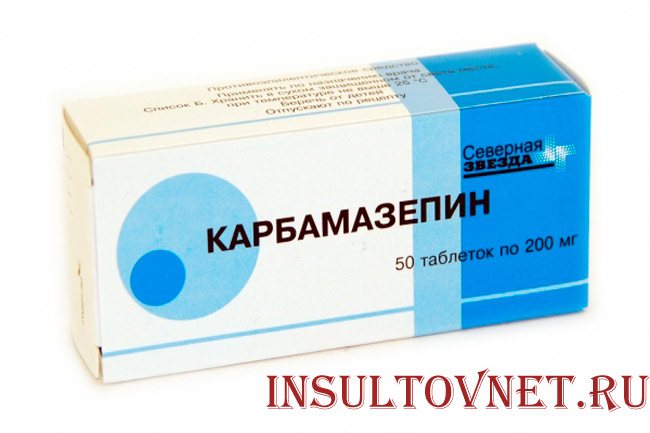
It is important to be careful: you should not allow the dose of Finlepsin to increase; there is a danger of causing bone fragility due to leaching of calcium from the body. The drug Carbamazepine is addictive, if there is little benefit and the doctor may write a prescription for Topiramate, Levitaratsitam or Gabapentin instead of this medicine.
Hand trembling. It's all genetics
Tremors are movements of various parts of the body like trembling, occurring regardless of a person’s will. In the vast majority of cases, the patient is bothered by vibrations of the upper limbs, as well as legs, neck or the whole body. Tremor is detected both as an independent disease and as a manifestation of another disease. Due to the difference in manifestations in the clinical picture of the disease, tremor of rest and movement is distinguished. Rest tremor occurs in the muscles of the limbs and trunk, which are not currently performing work. Movement tremor occurs during purposeful movements. Movement tremor, in turn, is of the following types:.
